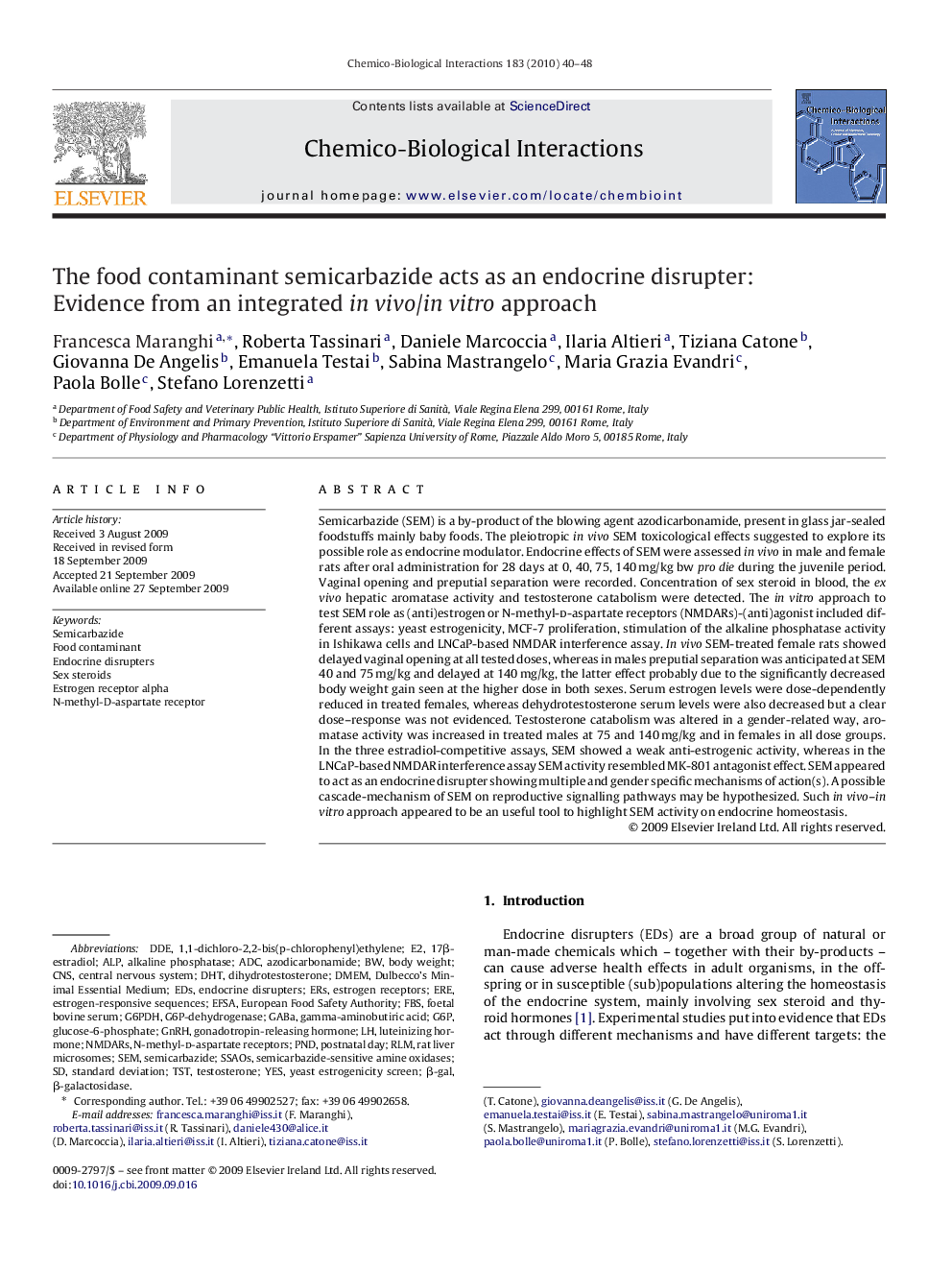| Article ID | Journal | Published Year | Pages | File Type |
|---|---|---|---|---|
| 2581404 | Chemico-Biological Interactions | 2010 | 9 Pages |
Semicarbazide (SEM) is a by-product of the blowing agent azodicarbonamide, present in glass jar-sealed foodstuffs mainly baby foods. The pleiotropic in vivo SEM toxicological effects suggested to explore its possible role as endocrine modulator. Endocrine effects of SEM were assessed in vivo in male and female rats after oral administration for 28 days at 0, 40, 75, 140 mg/kg bw pro die during the juvenile period. Vaginal opening and preputial separation were recorded. Concentration of sex steroid in blood, the ex vivo hepatic aromatase activity and testosterone catabolism were detected. The in vitro approach to test SEM role as (anti)estrogen or N-methyl-d-aspartate receptors (NMDARs)-(anti)agonist included different assays: yeast estrogenicity, MCF-7 proliferation, stimulation of the alkaline phosphatase activity in Ishikawa cells and LNCaP-based NMDAR interference assay. In vivo SEM-treated female rats showed delayed vaginal opening at all tested doses, whereas in males preputial separation was anticipated at SEM 40 and 75 mg/kg and delayed at 140 mg/kg, the latter effect probably due to the significantly decreased body weight gain seen at the higher dose in both sexes. Serum estrogen levels were dose-dependently reduced in treated females, whereas dehydrotestosterone serum levels were also decreased but a clear dose–response was not evidenced. Testosterone catabolism was altered in a gender-related way, aromatase activity was increased in treated males at 75 and 140 mg/kg and in females in all dose groups. In the three estradiol-competitive assays, SEM showed a weak anti-estrogenic activity, whereas in the LNCaP-based NMDAR interference assay SEM activity resembled MK-801 antagonist effect. SEM appeared to act as an endocrine disrupter showing multiple and gender specific mechanisms of action(s). A possible cascade-mechanism of SEM on reproductive signalling pathways may be hypothesized. Such in vivo–in vitro approach appeared to be an useful tool to highlight SEM activity on endocrine homeostasis.
